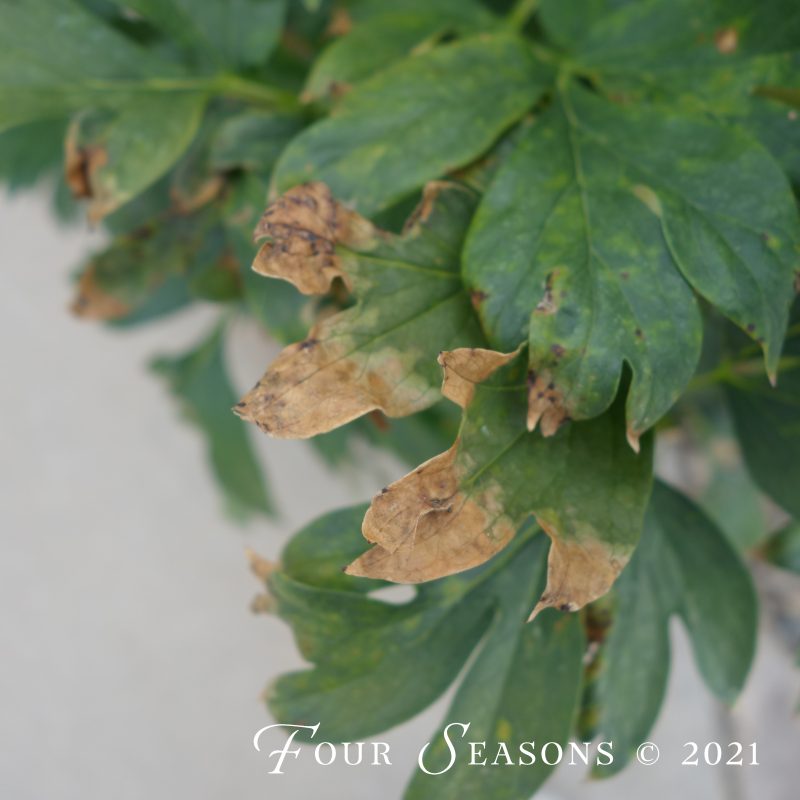It has already been a hot summer and plants, like the rest of us, don’t always take the heat well. They will respond in several ways and this week I’d like to talk about how to recognize heat stress in your yard.
Heat stress occurs when a plant loses water faster than it can replace it and it can happen with your annuals, vegetables, perennials, trees and shrubs, and even with containers and hanging baskets.
The most obvious sign that a plant is heat stressed is wilting. This occurs when the moisture in the plant drops. If you can get them watered as soon as you see this, usually they will simply pop back up and be fine. However chances of recovery diminish the longer it goes without water. The remedy is to water thoroughly when you spot the wilting occurring to give them a lifeline, then water deeply and well in the evening or early the next morning to give them time to absorb that moisture and recover. I prefer watering in the evening as this gives them ample time to recover overnight and helps them prepare for the heat the next day.
Some plants may roll their leaves, or cup them in response to prolonged high temperatures. They do this in order to reduce the visible leaf surface and this works to help reduce moisture loss in the plant. Keep them well watered to reduce this from happening, but if it does, let them be. They will return to looking great once the temperatures moderate.
Sometimes you will notice that the edges of the leaves are brown and dry but the rest of the leaf is fine. This is typical in plants with very large leaves like pumpkins, squash, and cucumbers. Since there is so much surface area on these large leafed plants, they know that they can conserve moisture by sending more towards the growing areas of the plant and don’t have to push moisture all the way to the edges and it’s a brilliant survival mechanism. Take care to keep an eye on plants that do this though, because sometimes dry edges mimic diseases. As with wilting, the remedy is to water thoroughly and deeply in the early morning or evening to allow them time to take it up and distribute it throughout the leaves before the heat of the next day hits.
When prolonged high temperatures persist, it’s common for some plants, especially those in the cucurbita family like squash and cucumbers, to drop their buds, blossoms or possibly their fruit that has already begun to form. Again, this is a built in survival mechanism, as it allows the plant to conserve water for the part that is actively growing. Watering consistently and deeply will help to keep this from happening. However, if it occurs and you’ve lost a few zucchini, no worries. More will be coming along shortly!
Other plants, especially those like lettuce, spinach, radishes and other cool season vegetables will respond to high temperatures by bolting. Bolting is when your vegetables start to rapidly grow vertically and flower or set seed before it’s time for you to harvest and enjoy them. Vegetables will often become bitter, or be of such poor quality that they may be unuseable. If you spot this starting to happen in your garden, the remedy is to harvest as soon as possible. Or, if a prolonged hot spell is predicted, harvest before it hits in order to enjoy them at their best.
Trees and shrubs may take longer to show you if they are heat stressed, so you’ll have to pay careful attention to the leaves. Generally if they are experiencing stress, you will notice drooping leaves, leaf drop, dieback where the leaves turn brown, or even early fall colors if it’s in the maple family. Since trees and shrubs are much larger than bedding plants, sometimes it takes slightly longer for them to show signs of stress which is why it’s important to keep your eye on them, especially newly planted or those planted within the past year or so.
We’ve had two very hot spells this summer and everything seems to have shown some signs of heat stress, including us! The trick to getting your plants through the summer is detecting the signs early and dealing with them promptly.

